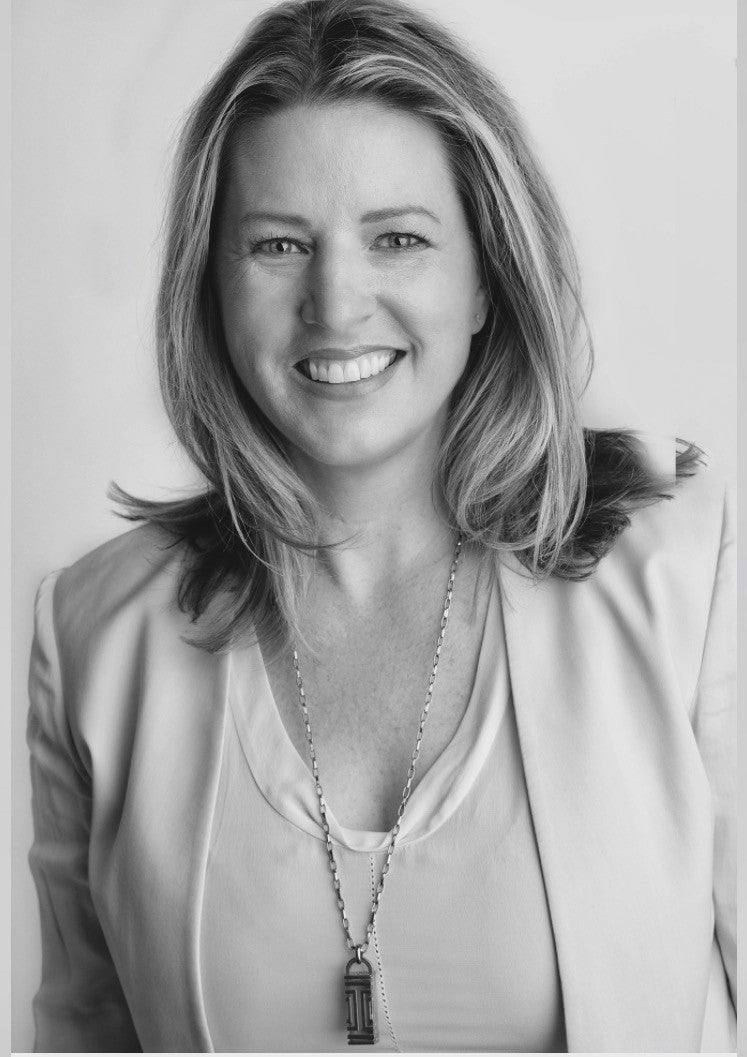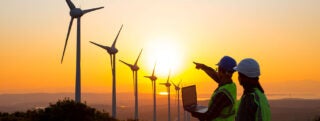- Resources
- Amazon’s big opportunity: Transparency in sustainability
Resources
Amazon’s big opportunity: Transparency in sustainability
Published: April 3, 2018 by Tom Murray
At Environmental Defense Fund, we believe that environmental progress and economic growth can and must go hand in hand. EDF+Business works with leading companies and investors to raise the bar for corporate sustainability leadership by setting aggressive, science-based goals; collaborating for scale across industries and global supply chains; publicly supporting smart environmental safeguards; and, accelerating environmental innovation.
This is the fifth in a series of interviews exploring trends in sustainability leadership as part of our effort to pave the way to a thriving economy and a healthy environment.
Over the past few years, Amazon’s sustainability team has been busy setting ambitious goals on renewable energy, making their voice heard on smart environmental policies, and leveraging their expertise in technology to drive innovation that can benefit the planet and boost profits.
I recently chatted with Kara Hurst, head of worldwide sustainability at Amazon and former CEO of The Sustainability Consortium, about how innovation and environmental goals intersect at Amazon, the launch of the new Amazon Sustainability Question Bank, and how sustainability issues could play a role in deciding the next Amazon headquarters (HQ2).
Here’s an edited excerpt of our discussion.
I’m a firm believer in setting big goals as a way for companies to unlock big innovation and big results. Can you tell me about some of your big goals at Amazon, and the benefits you’re seeing from setting those goals?

We believe in using our purchasing power to create more opportunities for renewables, which is why we’re striving to power our global infrastructure using 100% renewable energy. We’ve also launched our largest wind farm in Texas that contributes over 1 million megawatt hours (MWh) of clean energy to the grid, and we’re working to install 50 solar rooftops across our fulfillment center network by 2020.
I think the impact we’re having is circular. We want to invest in renewables as a company, we want our associates to be proud to work in solar powered buildings, and we want to be part of the new green economy and help create jobs in a high-growth industry.
That’s why, through our Amazon Career Choice Program, associates can become accredited by the North American Board of Certified Energy Practitioners® as photovoltaic installation professionals and Amazon pre-pays 95 percent of tuition and fees.
Even with all these efforts to generate your own renewable energy, you’re still a major purchaser of electricity. And companies like Amazon are critical stakeholders in policies effecting the power sector, like the Clean Power Plan. How do you see public policy – whether it’s at the federal or state level affecting your ability to meet clean energy goals?
We’ve gone on the record to support policies that we think are good for the company, good for customers, and good for the planet. We supported the Clean Power Plan by filing an Amicus brief with Apple, Google and Microsoft. And we’ve supported the previous administration on policy like the American Business Act on Climate Pledge.
In the US we support renewable energy and we do that through our engagement at the state and local levels as well as through a number of industry groups like the American Council on Renewable Energy, Advance Energy Economy, and C2ES. We work through these groups to be part of the business voice on sustainability issues that matter to our company.
Wherever we see the opportunity to increase access to renewable energy for our customers and for our facilities, we’re going to speak up for that. We’ve been working on access to more community solar, for example, and I’m very proud of the work that my colleagues at AWS have accomplished with the Dominion partnership in Virginia.
Let’s talk about transparency. Your platform enables shoppers to quickly compare products based on price, quality and more. How are you going to bring that same level of transparency to your sustainability initiatives?
I think transparency is one of the big opportunities in sustainability. There’s so much potential to talk directly to customers about the issues that they care about.
At Amazon, we’re customer-obsessed. We try and lead with our customer in mind and to understand what they want. That influences the information that we’re sharing. That’s why we launched the Sustainability Question Bank to make environmental information easy to access and easy to search by keyword or phrases. The feedback we get on the Question Bank is also a great way for us to learn what sustainability issues are customers are interested in.
Transparency is also front and center in our Elements products, which include baby wipes and vitamins. We provide full ingredient transparency and traceability on those products. We want customers to be able to go as deep as they want on transparency.
And how deep is that?
People experience a product very directly online. We don’t need the “romance packaging” to convey information about how the product is used or to promote the product, and we don’t need any of the embedded security devices that you’d have in the store.
So, you could put all kinds of information on the product detail page and then work on simply shipping the package in a container. We can get rid of all that excess packaging waste and just ship the product directly in a 100 percent recyclable cardboard box.
Is sustainability a factor in the decision-making process for where you’ll build Amazon’s new headquarters, HQ2?
I think a lot of the sustainability lessons we’ve learned in Seattle will carry forward and guide our evolution and growth in our next headquarters.
For example, there are benefits to having a big urban campus, and the district energy system that we set up in the Denney triangle area of Seattle allows us to use waste heat from a nearby data center to heat our buildings.
I like to say that 21st century problems require 21st century solutions. Are there ways that Amazon is leveraging your tech and analytics expertise to drive environmental and social impact beyond your operations?
AWS and our public sector group have been using analytics, IoT, and machine learning across Amazon. You can look at some of the work AWS has produced with geospatial and environmental datasets.
I think we naturally take a technology lens to all the sustainability work we’re doing. Let’s take packaging as an example. We’re building software to implement packaging initiatives that allow us to send products without an overbox, so we can just ship in one container.
We’re also looking at opportunities within our social responsibility space in our sourcing and manufacturing of our products. We’re looking at ways to communicate directly with workers in factories and to learn from that exchange of information and then share that information back with the factory owners and managers so they can make improvements.
If I was to look at your Amazon order history, what’s the most frequently ordered item in your shopping cart? (Full disclosure, you’ll find kids clothes and sneakers in mine.)
Laundry detergent, which I just ordered again last night. Apparently, we can never have enough laundry detergent in my house. I use Presto – it’s Amazon’s bio-based laundry detergent.
Follow Tom on Twitter, @tpmurray

